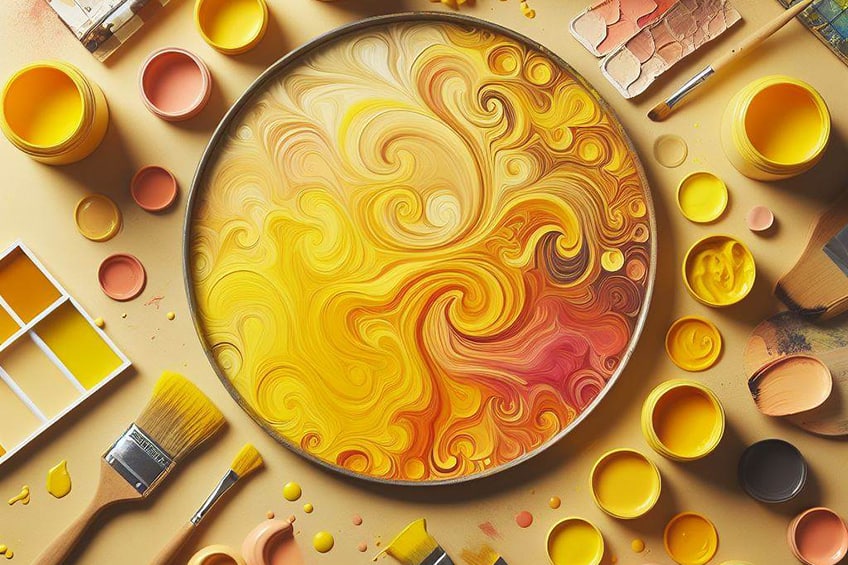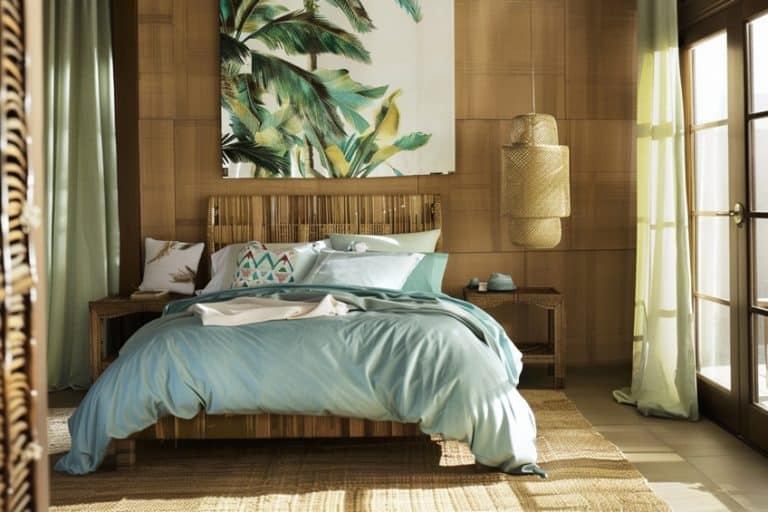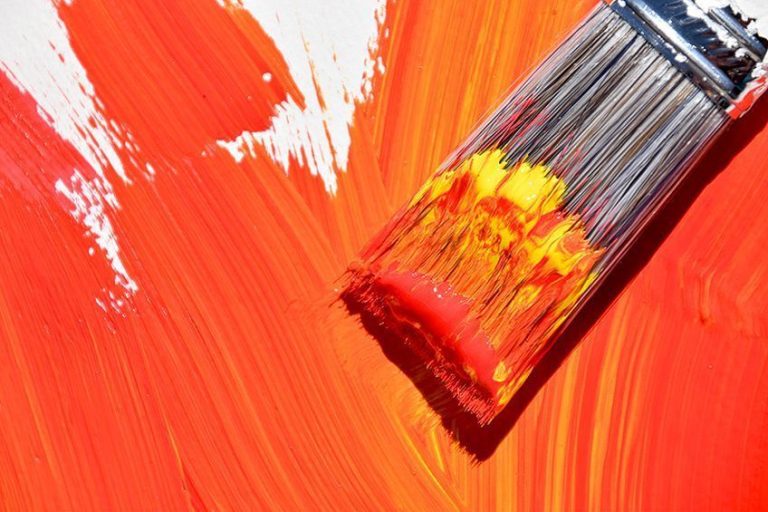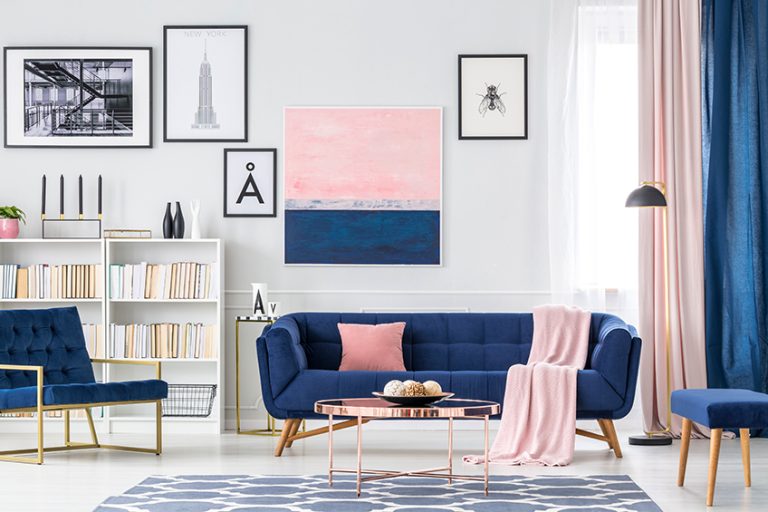What Colors Make Yellow? – Mixing Guide with Recipes and Visuals
Of all the colors that we use in paintings and design, yellow has to be one of the most vibrant and cheerful. Full of energy and life, bright yellow shades are thought to be the most visible color on the visible light spectrum. As an artist, you can’t avoid using yellow in your work. There are so many varied shades of yellow, and while many of them are available to buy in a tube, this can be an expensive business. Luckily, we have curated the most in-depth guide for mixing different shades of yellow with the colors you already have in your collection.
Table of Contents
What’s Yellow and Can You Mix a Yellow Color?
Yellow is a primary color in the subtractive (RYB and CMYK) color models, meaning it cannot be produced by mixing other colors in those contexts. However, yellow can be combined with other colors, such as red to create orange or blue to produce various shades of green, expanding the palette of achievable hues.
Easy Mixing Guide for Yellow Shades
You can mix yellow with different colors to get all sorts of yellow colors. We’ve created an overview on how to mix the most popular yellow color shades:
| Color Name | Hex Code | Mixing Recipe |
|---|---|---|
| Lemon Yellow | #FFF44F | 1 part primary yellow, <1 part white |
| Cadmium Yellow | #FFC300 | 1 part primary yellow, <1 part orange |
| Naples Yellow | #FADA5E | 1 part yellow ochre, 1 part white, <1 part primary yellow |
| Golden Yellow | #FFD700 | 1 part primary yellow, <1 part burnt sienna or <1 part red |
| Mustard Yellow | #FFDB58 | 1 part primary yellow, <1 part burnt umber |
| Saffron Yellow | #F4C430 | 1 part primary yellow, <1 part cadmium red |
| Sunflower Yellow | #FFDA03 | 1 part primary yellow, <1 part orange, <1 part brown |
| Butter Yellow | #FFFACD | 1 part primary yellow, 2 parts white, <1 part ochre |
| Canary Yellow | #FFFF99 | 1 part primary yellow, <1 part cadmium yellow |
| Straw Yellow | #E4D96F | 1 part yellow ochre, 2 parts white, <1 part primary yellow |
| Amber Yellow | #FFBF00 | 1 part primary yellow, <1 part burnt sienna, <1 part red |
| Chartreuse Yellow | #DFFF00 | 1 part primary yellow, <1 part green |
| Mellow Yellow | #F8DE7E | 1 part primary yellow, 1 part white, <1 part Naples Yellow |
| Fluorescent Yellow | #CCFF00 | Use fluorescent yellow paint |
| Honey Yellow | #FFC30B | 1 part primary yellow, <1 part burnt sienna, <1 part orange |
| Dandelion Yellow | #FEDF00 | 1 part primary yellow, <1 part cadmium yellow |
| Corn Yellow | #FFF380 | 1 part primary yellow, 1 part white, <1 part lemon yellow |
| Bumblebee Yellow | #FFD300 | 1 part primary yellow, <1 part golden yellow |
| Marigold Yellow | #EAA221 | 1 part primary yellow, <1 part amber yellow |
| Turmeric Yellow | #CABB48 | 1 part yellow ochre, <1 part primary yellow |
| Banana Yellow | #FFE135 | 1 part primary yellow, <1 part lemon yellow |
| Vanilla Yellow | #F3E5AB | 1 part primary yellow, 2 parts white, <1 part butter yellow |
| Eggshell Yellow | #F0EAD6 | 1 part primary yellow, 3 parts white |
| Pineapple Yellow | #563C0D | 1 part primary yellow, <1 part burnt umber, <1 part yellow ochre |
| Mimosa Yellow | #FFF68F | 1 part primary yellow, <1 part canary yellow |
Two Broad Ways of Understanding Color
As we grow up, we are primarily taught to think of color in one way. The traditional color theory states that there are three primary shades, and these can be combined in several ways to make all the other colors in the rainbow. These primary hues cannot be made by combining other shades according to traditional color theory. Yellow, alongside blue and red, is one of these primary shades, and therefore, according to the color theory we all grew up with, it is not possible to make different shades of yellow.

Fortunately, there is another way that we can look at color. This relatively unknown model of color is based on the system used by ink printers, in which cyan, black, magenta, and yellow are the primary shades. This model is called the CMYK model, and it is possible to use the principles of this theory to make different shades of yellow.
First, we will explore how to make yellow shades in traditional color theory, and then we will take a closer look at what two colors make yellow in the CMYK model.
How to Make Yellow Shades With Basic Color Theory
While it is not strictly possible to make yellow with traditional color theory, it is possible for us to create a variety of yellow shades. Before we begin discussing the different ways to lighten, darken, or adjust the temperature of yellow shades, it is important to understand color bias and the foundations of color theory. If your are interest in the basics of color mixing, we recommend you our article about mixing colors.
There is no doubt that you are familiar with the basic color wheel with yellow, blue, and red as the three central colors. Two of these shades will combine to create a secondary hue. If, however, you were to combine all three primary shades, you are likely to end up with a brown shade. Color temperature and bias is the reason why brown is the result of combining all three primary shades.
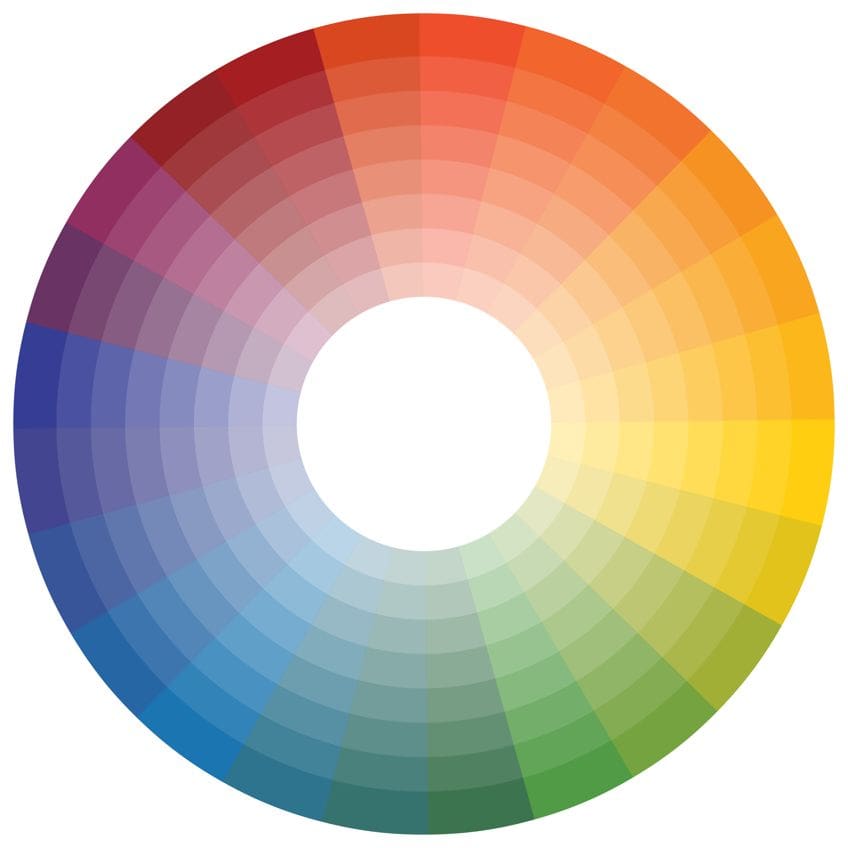
When it comes to adjusting the shade of a particular color, color temperature is the most important consideration. Temperature refers to whether the color is cool or warm, with red being the warmest color and blue the coolest. If a color, like orange, leans more towards red or includes a little red, it is considered a warmer shade. If, in contrast, a color like green includes blue, it, therefore, leans towards blue and is a much cooler shade. The direction that a color leans is referred to as color bias.
Color temperature does not only apply to secondary shades. Depending on the exact shade, your primary colors can be either warm or cool.
For example, cadmium yellow light is a very cool shade of yellow, indicating that it contains a small amount of blue, and leans more towards green than it does to orange. Yellow ochre, on the other hand, contains a touch of red so it is a very warm yellow hue. When we are adjusting yellow shades, paying attention to the bias of our base shade is essential. If we try to create a warm shade of yellow with a cool yellow base, we will mute the shade and create a shade of brown.

How to Make Yellow Cooler
When it comes to making a cool yellow there are only two things you need to do. The first thing you need is a cool yellow shade, like cadmium yellow light, to act as your base. The second thing you need is a cool blue shade. If your base yellow is warm, it will contain a touch of red. This small amount of red will interact with the blue and the yellow, creating a muted and slightly brown shade.
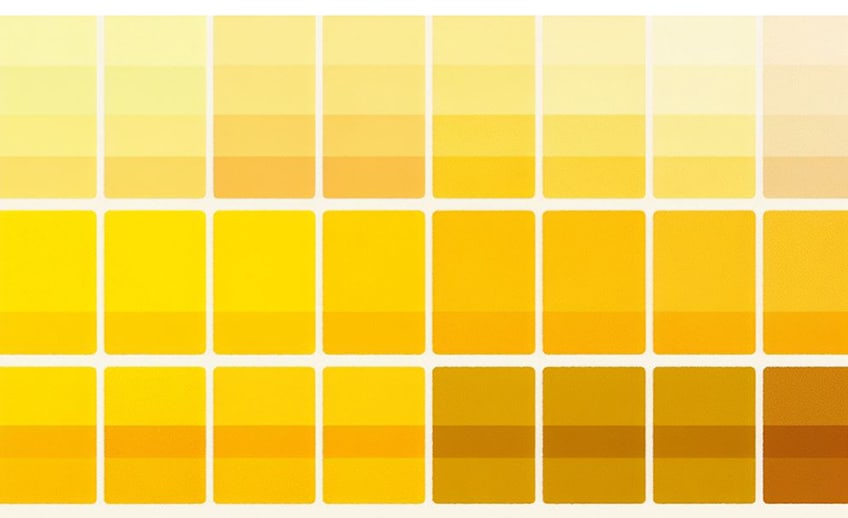
For both of these methods for making yellow cooler, we are using cadmium yellow light as the base yellow shade.
Yellow is a very light color, while even the lightest blue is very strong. As a result, it is important to only add a small amount of blue to your yellow at a time. A slow adding process is essential because the combination of yellow and blue is a greener shade, and while we want a yellow shade that leans towards green, it needs to remain yellow.
Cobalt teal blue is a very light and very cool blue shade. Similar to turquoise, cobalt teal blue has a very strong green bias already, so it is the perfect shade for creating a cool yellow. The combination of these two very cool shades is a bright and vibrant cool yellow. The more blue you add, the greener your combination will be.
For a slightly less vibrant and bright cool yellow, you can add a touch of pure cobalt blue to your cadmium yellow light. Cobalt blue is slightly warmer than cobalt teal, and as a result, it will slightly mute your yellow shade while making it cooler. The resulting yellow is a slightly darker cool yellow that is beginning to lean towards brown.

How to Make Yellow Warmer
To make a shade of yellow warmer, you need to add a warm color to an already warm yellow. We recommend using cadmium yellow as your base because it is a fairly neutral yellow that does contain the smallest amount of red.
To this yellow base, you can add a variety of warm red shades, but we think the best two shades are scarlet and burnt sienna.
If you want a warm and fiery yellow shade, adding a small dab of scarlet paint to cadmium yellow is the perfect combination. Scarlet is a very bright and warm red shade so when you add it to your yellow shade you will not risk muting the color. The resulting yellow shade is a vibrant and warm orange-like hue. Again, the amount of red you add will determine your final color, so you can make your yellow as warm or as cool as you like.
For a more muted warm yellow that leans closer towards yellow ochre or brown, you can add a little burnt sienna to your cadmium yellow. Burnt sienna is a cooler and darker shade of red that contains the smallest traces of blue. As a result, the warmer yellow you can create with it will be more muted. You can create a lovely dark orange-brown yellow with burnt sienna and cadmium yellow.

How to Make Yellow Paint Darker
There are several methods you can use if you want to know how to make yellow paint darker. You can either add one of a variety of colors that complement yellow, or you can combine different shades of yellow. Red, while making yellow warmer, also makes it darker. In the same way, you can use shades of orange to darken a shade of yellow.
Orange will darken a shade of yellow without making it as warm as red will.
You can also use shades of purple to darken any shade of yellow. Purple is the complementing color of yellow, and as a result, not only will it darken your yellow hue, but it will mute it too. The combination of cadmium yellow and purple, like violet purple, will be a dark and slightly brown color.
How to Make Yellow Paint Lighter
Depending on the vibrancy and temperature you desire in your light yellow paint, you have several options for lightening the color. You can either use white, grey, or light green to make your yellow shade lighter. Adding a touch of white is the most common and probably the easiest way to lighten yellow. White is one of the most popular shades used to lighten any color, but it does have a downside. In addition to lightening your shade of yellow, white will also mute the color slightly, taking away the vibrancy.
Nevertheless, white is a great shade to use to lighten any yellow hue, regardless of its temperature.
If you want to mute your yellow even more than white will allow, you can use a light grey to lighten any yellow shade. Grey will very effectively take away the brightness and vibrancy of your yellow shade, without turning it brown. The lightening and muting effects of grey will work for any yellow shade, regardless of temperature.
When you want to lighten cool yellow paint while maintaining vibrancy, you can use a touch of a light and cool green shade, like lime green. The result of this combination will be a vibrant and light yellow shade, but the green will also make your yellow much cooler.
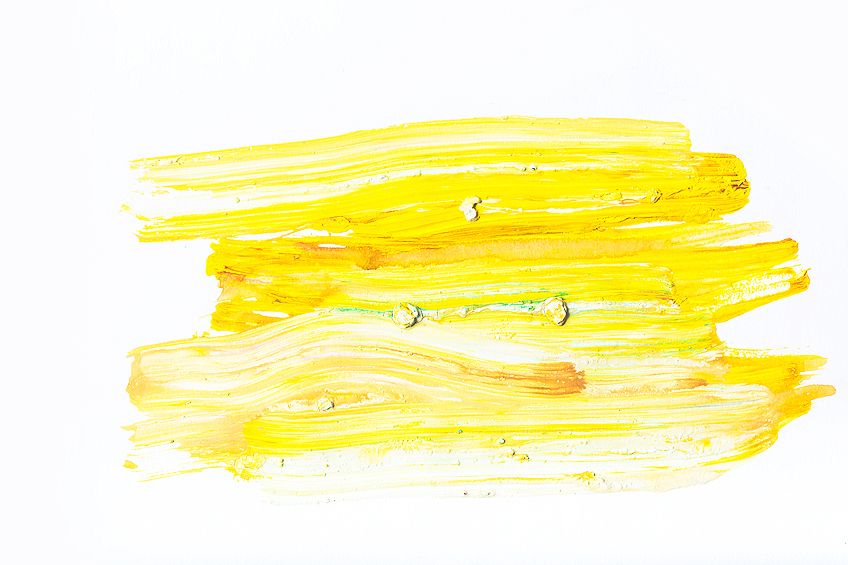
How to Make Yellow Muted
Bright yellow shades are vibrant and make wonderful accenting additions to any composition. As we have already seen, however, too much vibrant yellow can be overwhelming and can even border on garish. In any painting, you will be required to use more muted shades of yellow to add shadows and dimensions. We have already covered most of the colors you can use to mute cadmium yellow, including the following:
- Burnt sienna
- Violet purple
- Grey
- Cobalt Blue
A Different Way of Understanding Color: What Two Colors Make Yellow?
The color theory we have used so far is the one we all learn at school. While we can use the rules of this basic color theory to adjust our yellow shades, it does not allow us to actively make yellow from two other colors. You can, however, use the CMYK model to make yellow from two different colors.
So, what two colors make yellow in this model? The answer, as you can see from the diagram below, is red and green.
The reason why red and green make yellow is that the red shade cancels out the blue within the green, leaving only the yellow remaining. You can experiment with a range of different green and red shades to see which combinations produce the perfect yellow for your needs.

Yellow is a bright and vibrant shade that can infuse your work with energy, joy, and life. You can make your own unique yellow shades by combining red and green in the CMYK color model, or you can adjust the tone, temperature, and brightness of your yellow shades by adding a range of other hues.
Frequently Asked Questions
How to Make Yellow Paint Darker?
There are several colors that you can add to your yellow paint to make it darker, including red, orange, purple, and brown. You can also mix different shades of yellow together, for example, you can add yellow ochre to a bright shade of yellow to darken it.
What Two Colors Make Yellow Paint?
Although yellow is one of the primary shades in traditional color theory, you can actually make a yellow hue from two colors. A combination of red and green in equal parts will create a vibrant and bright yellow shade.
In 2005, Charlene completed her Wellness Diplomas in Therapeutic Aromatherapy and Reflexology from the International School of Reflexology and Meridian Therapy. She worked for a company offering corporate wellness programs for a couple of years, before opening up her own therapy practice. It was in 2015 that a friend, who was a digital marketer, asked her to join her company as a content creator, and this is where she found her excitement for writing.
Since joining the content writing world, she has gained a lot of experience over the years writing on a diverse selection of topics, from beauty, health, wellness, travel, and more. Due to various circumstances, she had to close her therapy practice and is now a full-time freelance writer. Being a creative person, she could not pass up the opportunity to contribute to the Art in Context team, where is was in her element, writing about a variety of art and craft topics. Contributing articles for over three years now, her knowledge in this area has grown, and she has gotten to explore her creativity and improve her research and writing skills.
Charlene Lewis has been working for artincontext.org since the relaunch in 2020. She is an experienced writer and mainly focuses on the topics of color theory, painting and drawing.
Learn more about Charlene Lewis and the Art in Context Team.
Cite this Article
Charlene, Lewis, “What Colors Make Yellow? – Mixing Guide with Recipes and Visuals.” Art in Context. June 29, 2021. URL: https://artincontext.org/what-colors-make-yellow/
Lewis, C. (2021, 29 June). What Colors Make Yellow? – Mixing Guide with Recipes and Visuals. Art in Context. https://artincontext.org/what-colors-make-yellow/
Lewis, Charlene. “What Colors Make Yellow? – Mixing Guide with Recipes and Visuals.” Art in Context, June 29, 2021. https://artincontext.org/what-colors-make-yellow/.


